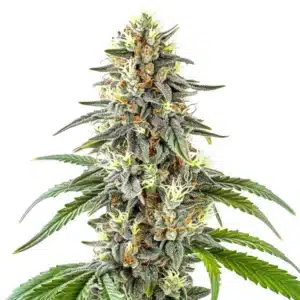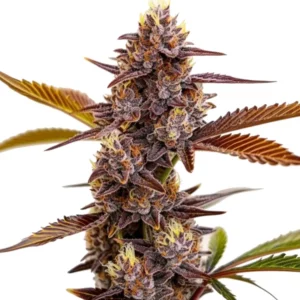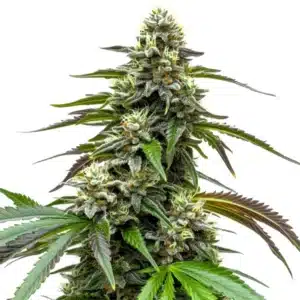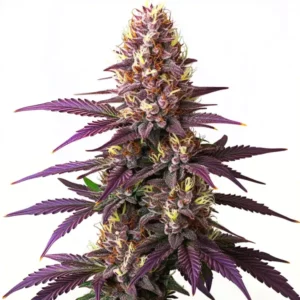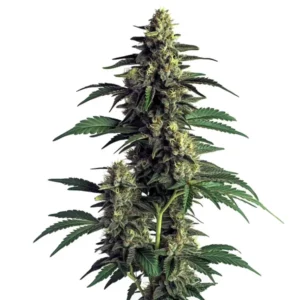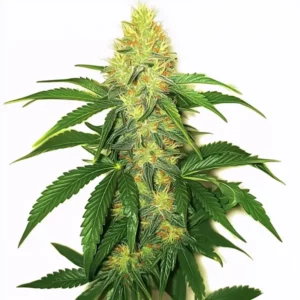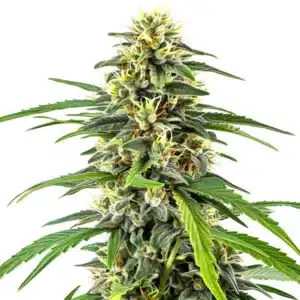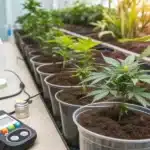
Best pH Water for Cannabis
Cultivating cannabis isn’t just a hobby; it’s a blend of science and art. Among the many factors that contribute to the success of your grow, the pH level of your water plays a crucial role. The pH scale measures the acidity or alkalinity of a solution, ranging from 0 (very acidic) to 14 (very basic), with 7 being neutral. Just like a balanced diet is essential for health, cannabis plants thrive at specific pH levels that directly influence their growth and yield.
Why pH Matters for Cannabis Plants
Knowing the importance of pH is key to nurturing healthy cannabis plants. The best pH for growing weed ensures that your plants can absorb nutrients efficiently. When the pH strays outside the preferred range, it can hinder nutrient uptake, leading to various growth issues. For instance, if pH levels are too low, it can cause nutrient lockout, preventing essential elements like calcium and magnesium from being absorbed.
Recommended Strains
White Amnesia
|
|
THC | 18% - 22% (Medium) |
|
|
Type | Feminized |
|
|
Yield | High |
|
|
Phenotype | 30% Indica / 70% Sativa |
White Fire OG
|
|
THC | 24% - 28% (High) |
|
|
Type | Feminized |
|
|
Yield | High |
|
|
Phenotype | 50% Indica / 50% Sativa |
Nutrient deficiencies or toxicities can manifest in several ways, such as discolored leaves or stunted growth. By keeping pH levels in check, you’re helping ensure that your plants receive the best nutrition possible, leading to lush growth and bountiful harvests. Observing your plants regularly can provide insights into their health, making it easier to address any potential pH issues before they escalate.
- Importance of Nutrient Absorption: Proper pH is essential for plants to take in nutrients effectively.
- How pH Affects Nutrient Availability: Learn how variations in pH can impact nutrient solubility.
- Signs of Nutrient Deficiencies: Familiarize yourself with the visible symptoms of stressed plants.
Typically, cannabis plants prefer a soil pH range of 6.0 to 7.0, while hydroponic systems do best around 5.5 to 6.5. Staying within these ranges can enhance nutrient availability, supporting healthier plants and ultimately leading to richer and more flavorful buds. Remember, a little attention to pH can go a long way!
Promos & Deals
Optimal pH Water for Different Growth Stages
Cannabis growth occurs in distinct phases, each requiring careful pH management. During the seedling stage, maintaining a pH of around 6.0 is crucial for establishing a stable root system. This balanced environment ensures that seedlings can easily absorb essential nutrients, setting the foundation for future growth.
As your plants transition into the vegetative phase, consider adjusting the pH slightly higher, to about 6.3 to 6.5. This promotes the absorption of nitrogen and other vital nutrients that support vigorous growth. Once your plants start flowering, lowering the pH back to approximately 6.0 can optimize their nutrient absorption as they focus on producing beautiful buds. Each stage of growth presents unique pH needs, so adapting accordingly is key.
Maintaining pH Levels
Consistently monitoring pH levels is essential for the well-being of your cannabis plants. Using pH meters or test strips can help you keep an eye on the levels between waterings. Investing in a good quality pH meter can simplify the process and save you time in your growing journey. Here’s a quick step-by-step guide for maintaining your pH:
- Test the Water: Always test your water before using it for your plants to ensure it’s in the right range.
- Adjust if Necessary: Utilize pH up or down solutions to make any necessary adjustments.
- Monitor Regularly: Especially when adding nutrients, checking the pH can ensure a balanced environment.
Keep in mind that adding nutrients can alter the pH level, making it critical to check your water after mixing in fertilizers or supplements. Regular testing and adjustments empower you to create the most nourishing environment for your plants, greatly enhancing their growth potential.
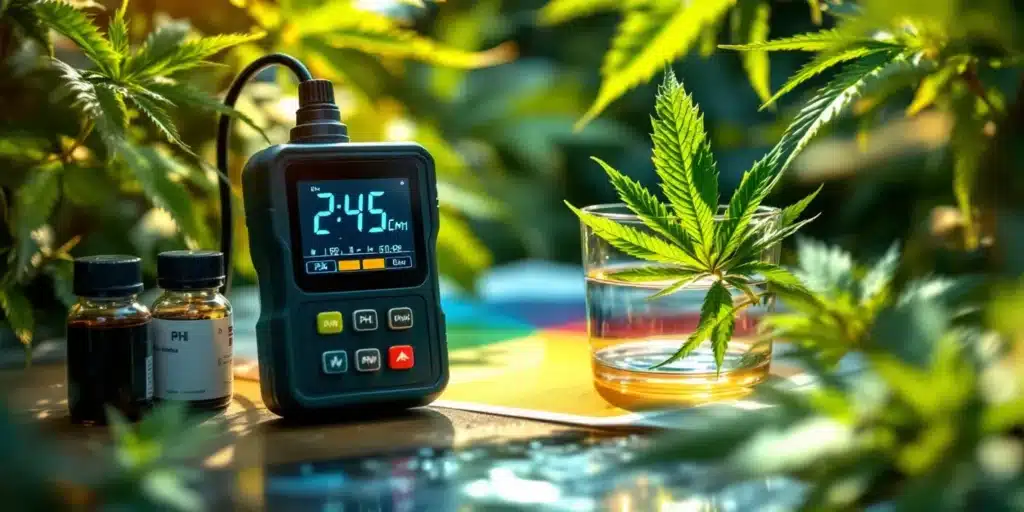
Sources of Water and Their pH Levels
The source of your water can greatly impact its pH level, making it essential to know how different types of water compare. For instance, tap water can vary widely in pH, often falling between 6.0 and 8.0. This variability can pose challenges for nutrient absorption. If you find your tap water difficult to control, consider filtration systems that can help stabilize its pH.
Rainwater is another excellent option, typically more neutral and falling within a pH range of 6.0 to 7.0. However, testing it for impurities is a good practice to ensure its quality. Alternatively, distilled or reverse osmosis water provides a clean slate but often requires adjustment to match the pH needs of cannabis cultivation.
Practical pH Solutions
If you’re encountering pH challenges, consider these practical strategies to help you optimize your water for cannabis cultivation:
- pH-Adjusting Solutions: Use horticulturally-designed pH-adjusting solutions to maintain the right levels.
- Organic Buffers: Mixing in organic materials can naturally buffer pH levels.
- Clean Storage: Store your water in clean, contamination-free containers to preserve quality.
Finding the right balance in pH may take some practice, but experimenting with these tips can lead to healthier plants and more abundant yields. Remember, with consistent care and proper adjustments, you’ll cultivate strong and resilient cannabis plants.
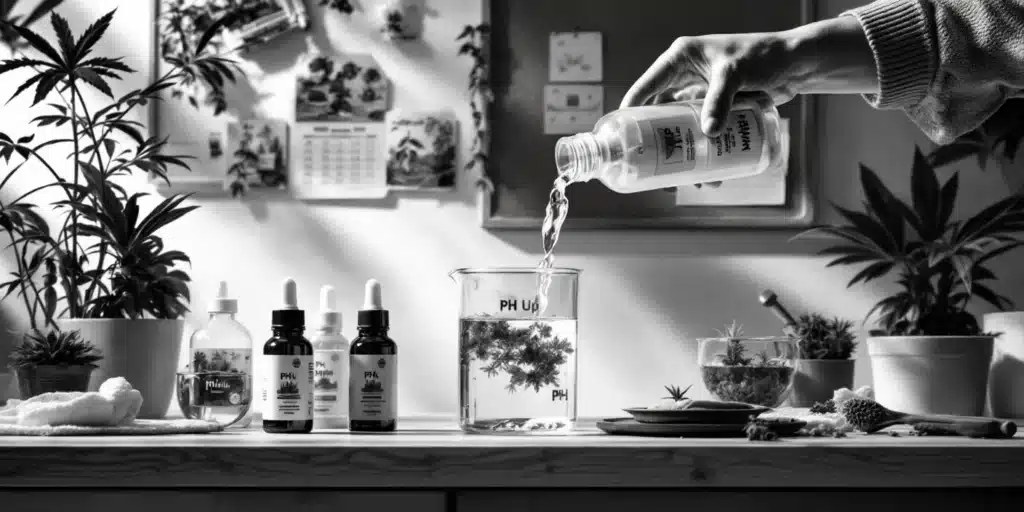
Choosing the Right Nutrients for Water pH
The type of nutrients you choose can significantly impact the pH of your water. Some nutrient solutions are specifically formulated for cannabis and can help maintain optimal pH levels throughout the growth cycle. For example, nutrient mixes that include balanced levels of both macro and micronutrients can support healthy pH levels while effectively nourishing your plants. This is especially important during the early stages, as maintaining the best pH for germinating cannabis seeds ensures strong root development and successful sprouting.
When selecting nutrients, look for products that specify their pH stability. Quality nutrient solutions generally buffer pH, creating a suitable environment for your plants. Before mixing, always check how these nutrients interact with your water’s pH to ensure compatibility.
Recommended Nutrient Practices
To ensure a thriving nutrient regimen:
- Select Quality Products: Begin with nutrients specifically designed for cannabis.
- Follow Instructions: Adhere closely to the manufacturer’s mixing guidelines for best results.
- Adjust After Mixing: Always recheck pH levels after adding nutrients to confirm they remain within the desired range.
Cannabis can be responsive to effective nutrient management. By tuning in to your plants’ signals and adjusting fertilizers and pH as their needs evolve, you’ll create an optimal growing environment. Stay engaged with your plants, and you’ll reap the rewarding results of your efforts.
Strain Recommendations for Different pH Levels
The strain you choose can greatly influence your growing experience, so picking one suitable for your skill level and grow environment is crucial. Here are three fantastic strains from Blimburn Seeds that thrive under well-monitored pH levels:
- Blueberry: This delightful strain boasts a sweet, fruity aroma and offers soothing effects. It flourishes in a pH range of 6.0 to 7.0.
- Green Crack: Known for its invigorating effects, this strain performs well with pH levels between 6.0 and 6.5, perfect for both beginners and seasoned growers.
- White Widow: This strain is famous for its resin production and balanced effects, adapting well to a variety of pH levels, especially 6.0 to 6.5.
Choosing strains based on your growing environment not only enhances the cultivation process but also allows for a more fulfilling experience. Selecting the right cannabis strain can lead to a vibrant garden full of rewarding plants, waiting to be enjoyed!
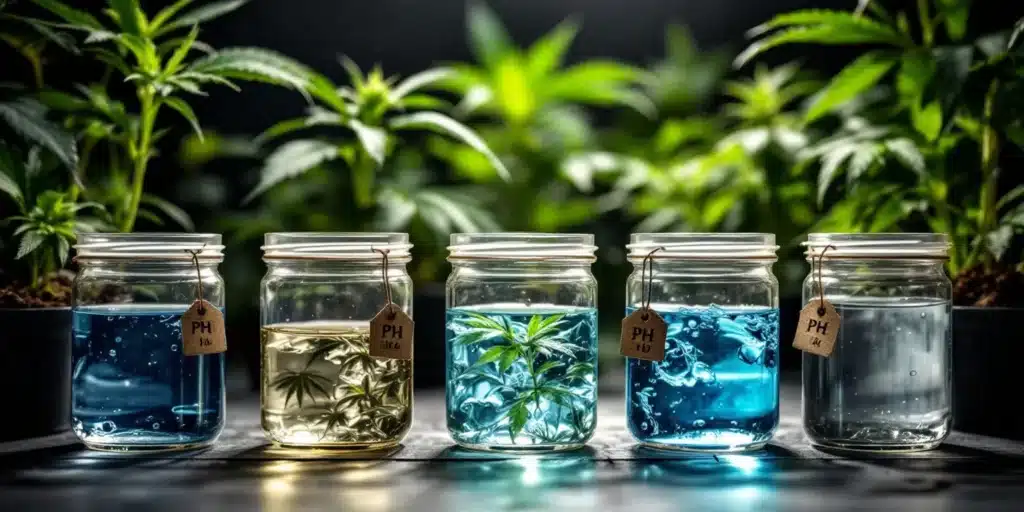
FAQs
What is the ideal pH level for cannabis plants?
The ideal pH level for cannabis plants varies depending on the growing medium. For soil, maintaining a pH range of 6.0 to 7.0 is recommended. In hydroponics, aim for a pH level of 5.5 to 6.5. These levels support effective nutrient absorption and overall plant health.
How can I adjust the pH of my water?
You can adjust pH levels using commercial pH up and pH down solutions, which are widely available in gardening stores and online. Always test your water after adjustment to confirm it falls within the desired range.
What happens if the pH is too low or too high?
When pH is too low, plants may experience nutrient lockout, leading to visible deficiencies. On the flip side, a high pH can result in nutrient toxicities. Both conditions can lead to unhealthy plants and reduced yields.
Are there any organic methods to manage water pH?
Absolutely! Using organic materials such as compost can be effective. Lime can increase pH, while sulfur can help lower it. Although these methods may take longer, they contribute to a more sustainable gardening approach.
How often should I check my water pH?
It’s advisable to check your water pH before each watering session and after adding any nutrients. Regular monitoring helps ensure your cannabis plants remain healthy and that their nutrient needs are consistently met.



